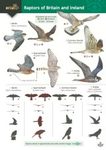![Raptor Research and Management Techniques Raptor Research and Management Techniques]()
Click to have a closer look
About this book
Contents
Customer reviews
Related titles
About this book
Raptor Research and Management Techniques is the much anticipated and thoroughly updated version of the popular but long out of print Raptor Management Techniques Manual.
From the foreword:
"Unlike its predecessor, Raptor Research and Management Techniques is a bound work that is loosely modeled after the highly acclaimed Bird Census Techniques, second edition (2000) by Colin Bibby, Neil Burgess, David Hill, and Simon Mustoe.
Raptor Research and Management Techniques is not intended to be an all-inclusive manual or detailed "how-to" book, but rather a review of the field with up-to-date information on various techniques that is designed to provide readers with a general overview of the field. That said, each chapter has numerous references that will direct readers to additional sources for details and cautions regarding various field and laboratory techniques and management tools.
The first four chapters, one each on the raptor literature, raptor systematics, raptor identification, and study design, data analysis, and the presentation of results, provide a general overview of the field of raptor research. The next ten chapters provide insights into field-study techniques, including surveying and monitoring, behavioral studies, diet analysis, habitat sampling, accessing nests and assessing nest success, capture and marking techniques, and spatial tracking. Four additional chapters provide information on the energetics, physiology, pathology, and toxicology of raptors; five more cover reducing management and researcher disturbance, mitigation, captive breeding, the augmentation of wild populations, and rehabilitation. The work concludes with chapters on public education and legal considerations."
Contents
Preface; The Raptor Literature; Raptor Identification, Ageing, and Sexing; Systematics; Study Design, Data Management, Analysis, and Presentation; Survey Techniques; Migration Counts and Monitoring; Behavioral Studies; Food Habits; Habitat Sampling; Accessing Nests; Assessing Nesting Success and Productivity; Capture Techniques; Marking Techniques; Spatial Tracking - Radio Tracking; Satellite Tracking; Stable Isotopes and Trace Elements; Energetics; Physiology Chr(45) Gastrointestinal; Hematological; Reproductive; Pathology Chr(45) Disease; Ectoparasites; Endoparasites; Toxicology; Reducing Management and Research Disturbance; Mitigation; Captive Breeding; Augmenting Wild Populations and Food Resources; Rehabilitation; Public Education; Legal Considerations; Index.
Customer Reviews





































